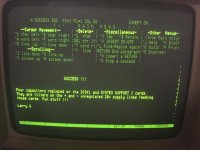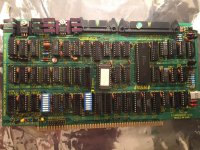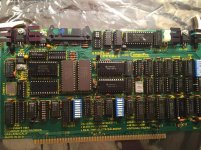I am trying to determine values needed for replacing tantulum caps on my Compupro S100 boards.
The values in the parts lists conflict with the values shown in schematics. I raised this question
in my thread about the Wameco QMB-9. For example, in the Interfacer 4 manual p48 shows C1-C8
dipped tantulum 20V - no mfd given. Schematic on page 52 shows C8 clearly as .39uf (notice the decimal).
These are noise suppression filters on the unregulated DC inputs and regulated outputs.
However, the System Support 1 manual shows 4 suppression caps as 39uf (no decimal) but 35v !!!
Unless anyone advises otherwise, I am going with all suppression caps on the power lines as .39uf 35v
except where other uf value noted but definitely 35v on all caps I replace.
Has anyone on this forum done this successfully? If so, what values / types?
I'll go with tantalum since the price seems ok as long as uf value is 10uf or less.
I'll report back here success or failure, smoke or no smoke
Larry G
The values in the parts lists conflict with the values shown in schematics. I raised this question
in my thread about the Wameco QMB-9. For example, in the Interfacer 4 manual p48 shows C1-C8
dipped tantulum 20V - no mfd given. Schematic on page 52 shows C8 clearly as .39uf (notice the decimal).
These are noise suppression filters on the unregulated DC inputs and regulated outputs.
However, the System Support 1 manual shows 4 suppression caps as 39uf (no decimal) but 35v !!!
Unless anyone advises otherwise, I am going with all suppression caps on the power lines as .39uf 35v
except where other uf value noted but definitely 35v on all caps I replace.
Has anyone on this forum done this successfully? If so, what values / types?
I'll go with tantalum since the price seems ok as long as uf value is 10uf or less.
I'll report back here success or failure, smoke or no smoke
Larry G



